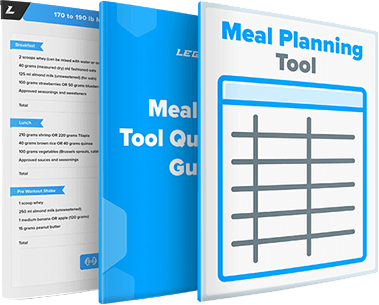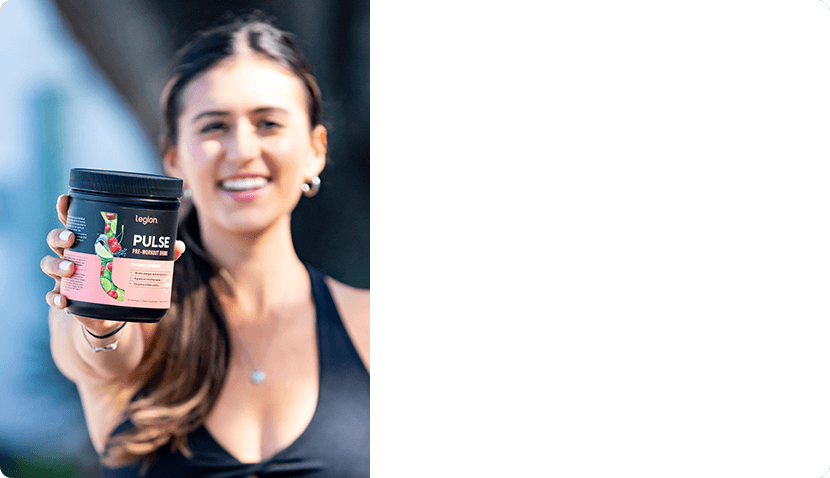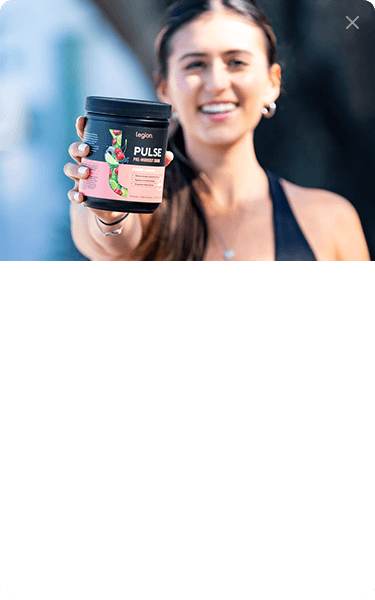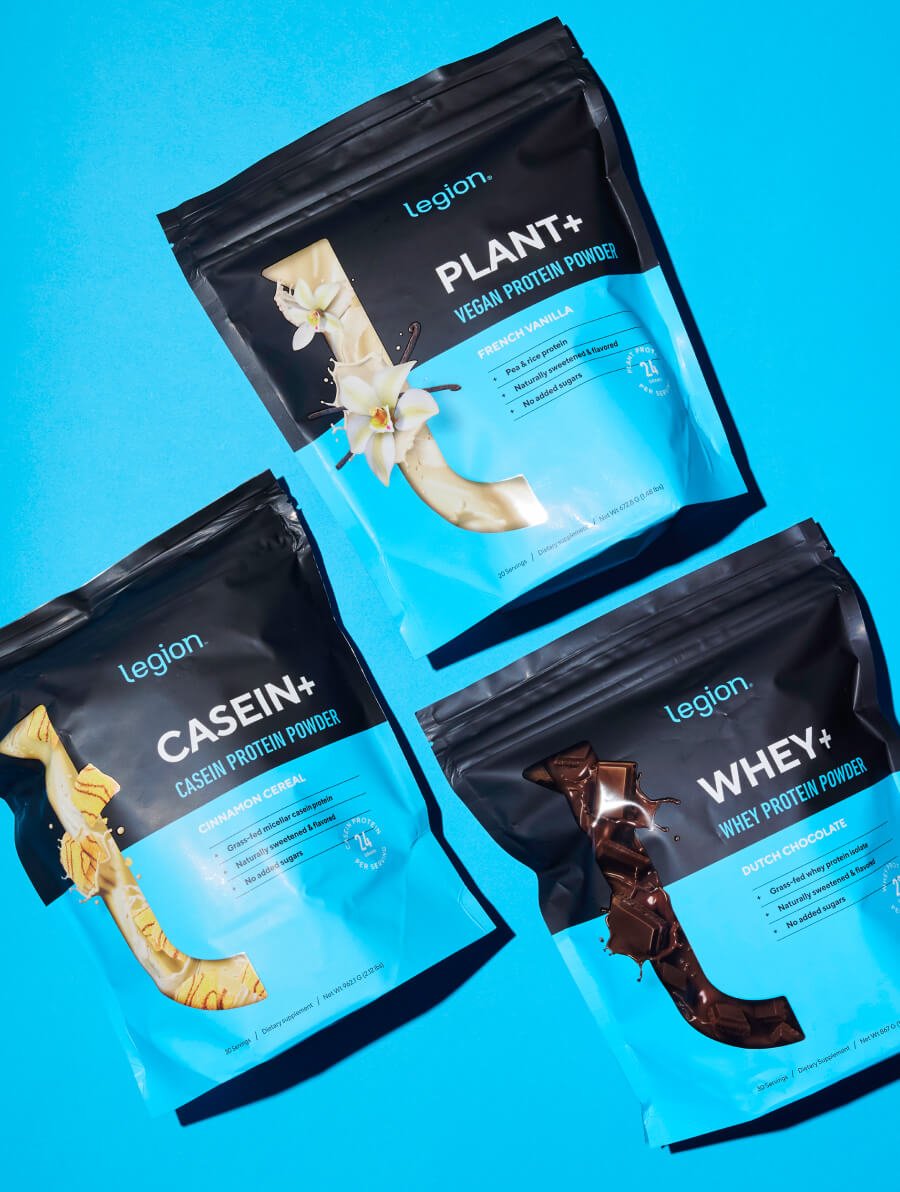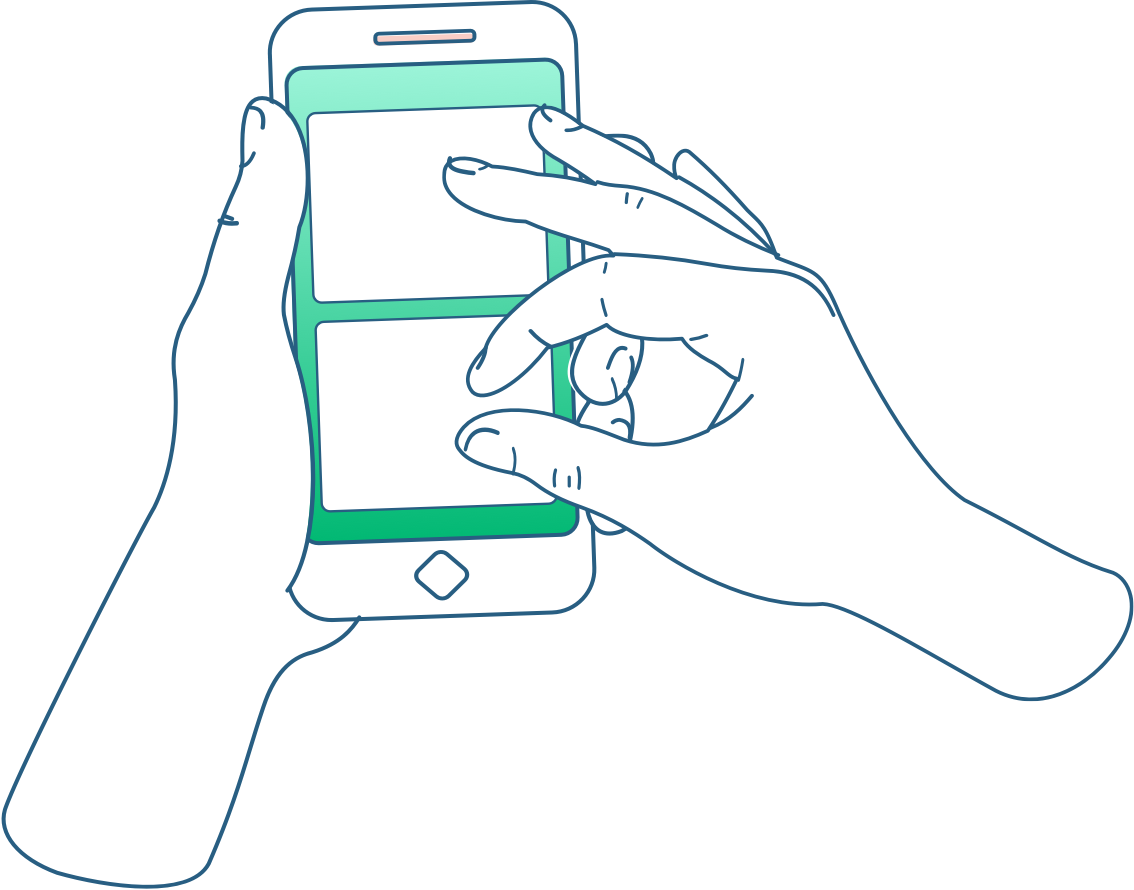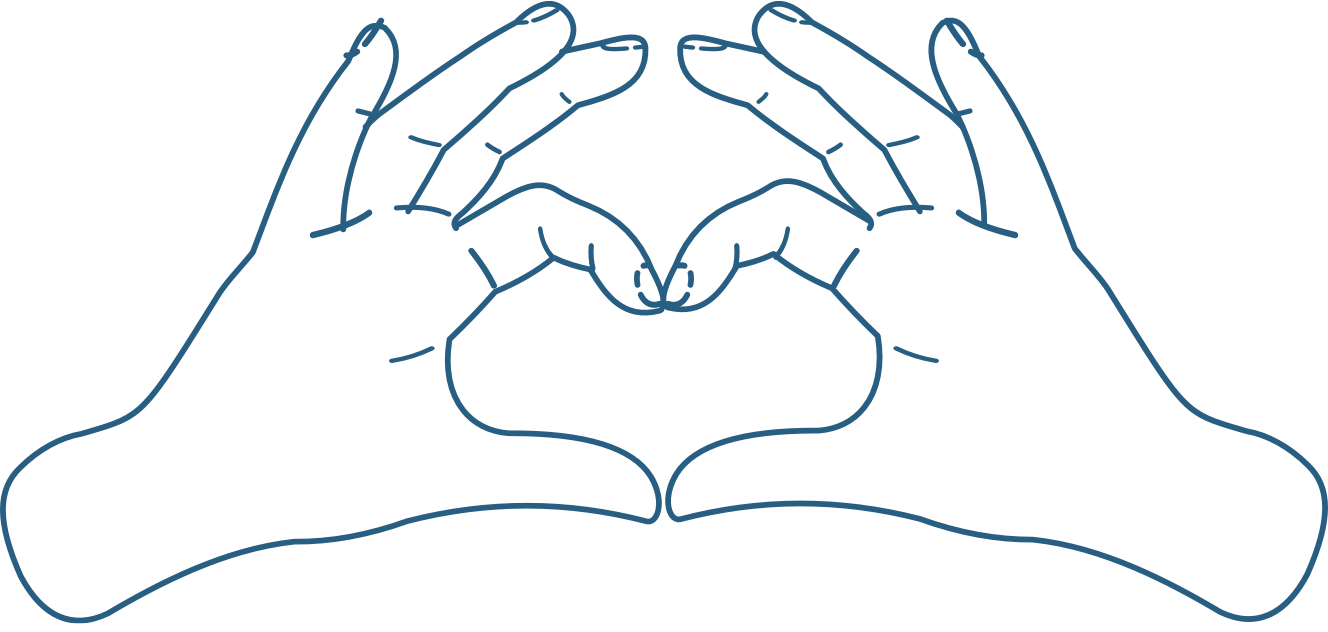Listen on Apple Podcasts | Listen on Spotify | Listen on YouTube
Over the past few weeks, you’ve been bombarded with contradictory, confusing, and complex facts and figures about COVID-19.
At this point, the story most often repeated in the media goes like this:
- Aside from social distancing, washing your hands, and (maybe) wearing a face mask, there’s nothing you can do to avoid getting COVID-19.
- If you do get COVID-19, there’s nothing you can do to hasten your recovery or reduce the severity of your symptoms except wait for your body to get rid of the virus.
- If you’re one of the unlucky few who develops severe symptoms like respiratory failure, the best doctors can do for you is put you on a ventilator, give you some drugs to ease your discomfort, and hope for the best.
While this story is more right than wrong based on the available evidence, it paints a grim, overly simplistic picture.
Here’s how Dr. Zhen Yan, the director of the Center for Skeletal Muscle Research at the University of Virginia’s Robert M. Berne Cardiovascular Research Center, puts it:
“All you hear now is either social distancing or ventilator, as if all we can do is either avoiding exposure or relying on a ventilator to survive if we get infected.”
Dr. Yan takes a more optimistic and, as you’ll see, evidence-based approach to the problem.
In a review study published by Dr. Yan and his colleague Hannah Spaulding at the University of Virginia, they explain how regular exercise can prevent or at least reduce the severity of one of the deadliest symptoms of COVID-19, a condition known as acute respiratory distress syndrome (ARDS).
Scientists have known for quite some time that exercise improves immune function and reduces your risk of getting sick, but it’s rarely mentioned in discussions about COVID-19.
In this episode, you’ll learn how exercise may be particularly helpful for combating the symptoms of COVID-19, how much you should exercise to get the benefits, whether or not you can exercise too much, and more.
Let’s go!
Timestamps:
12:10 – How does exercise protect you from COVID-19?
13:20 – How does COVID-19 cause acute respiratory distress syndrome (ARDS)?
15:13 – How does exercise reduce the severity of ARDS?
20:25 – How much cardio do I need to do to boost my body’s immune system?
21:33 – Does doing too much cardio and exercise impair my immune system?
Mentioned on the show:
What did you think of this episode? Have anything else to share? Let me know in the comments below!
Transcript:
Hello and welcome to another episode of Muscle for Life. This episode is gonna be about Covid 19 because it’s still out there and it is not over. And while there may not be a major second outbreak, a fall or winter outbreak like some experts have been predicting, it is not gone despite the media’s complete one.
On it in light of the George Floyd protests just a few weeks ago or so when Despicable White people were out protesting the lockdown and the unconstitutional nature of the lockdown and protesting for their constitutional rights, those people were deplorable. They were grandma killers, and they were putting all of us at risk over something so trivial as constitutional rights.
And for anyone thinking that it wasn’t over constitutional rights and they just wanted to get haircuts and they just wanted to try to uphold white supremacy by walking around with guns. Maybe there was a little bit of that out there. Who knows? But the crux of the matter was the unconstitutional nature of the lockdown, and that is according to many legal and constitutional scholars, by the way, people who are.
That the governor does not have the right to tell you that you have to stay in your home for your own good, for the collective good, regardless of the circumstances, and does not have the right to tell businesses that they have to close down, that they cannot serve their customers and serve their communities.
And considering that if you just look backward in time. If you make a cursory review of history, you’ll notice that pretty much every great civilization has collapsed from within, has not been conquered from without, but has devolved into a final and terminal condition marked by corruption and tyranny and infighting, and.
Class warfare. And so when we apply that context to our current situation, we should be very concerned if the governments, and that means the federal governments or the state governments, so federal or local governments are moving. In that direction are moving in the direction of taking away our individual liberties and establishing authoritarian measures to micromanage every aspect of our lives.
Because make no mistake, there are many people in the many holes of power throughout the world who think that they just know. What’s best for you, better than you? That they can manage your life better than you can. That most of us are simply incapable of managing our own affairs, let alone societies affairs, that we are incapable of even getting our own shit together.
Let. Getting societies shit together. And so then what is best for all of us, individually and collectively, is to basically relinquish all control to them because they are so smart and so noble, and they’ve really figured it out. They have such a depth of understanding of the fundamental problems that we face that we just need to accept.
Authority, accept their policies, accept their measures, regardless of how we feel about them or regardless of our moral intuitions about them, because of course, and these people are very big on this type of thinking. The ends justify the means. The ends that they’re working toward are so idealistic and they are so exalted that.
How we get there isn’t of much importance, and we may not like the process as we’re going through it, as we are in this chrysalis, this transitional state. It may be rough and it may look like it is evil even, but when we’re on the other end of it, when we’re the beautiful butterflies of the world, we are going to thank our masters for.
Enlightened guidance. And if you want to get a better understanding of what I just talked about, read the book, The Anglo-American Establishment by Carol Quigley, and first check out Quigley’s Wikipedia page so you can get a sense of who he was and why he is a very reliable source. And then check out the book, and if you have the time and the fortitude, read his Magnum Opus Tragedy and Hope it’s about 1200 pages.
It took. A couple of decades to write. Bill Clinton said it was the most influential book he has ever read, and Quiggly was a personal mentor to Bill and Bill credits quiggly for putting him on the path that he chose for his life. And you know what? I’m gonna do a book club episode on the Anglo American establishment, just so people who don’t want to read the book can at least get a sense of the information in it.
Already have my next book club lined up. It’s gonna be ultra learning by, I believe his name is Scott Young. But after that I’ll do the Anglo. Establishment. And so anyway, bring this all the way back to something that is remotely on topic. The coronavirus is still out there and although considering the most recent data that has come out of the cdc, for example, which was a death rate, I believe, of 0.026% among confirmed cases, and it was like 0.34% if you factor in 35% of asymptomatic cases, There may be many more than that, so we’re not quite sure.
And so the 0.26% among confirmed cases we know, and then when you look into the demographics of that, for example, 46% of deaths here in the United States have occurred in nursing homes. And we know that this virus is particularly deadly among older people and especially older people who have health conditions who are not healthy.
Whereas someone like me, I’m 35, and if you drill down into the data, I have no reason to care about the coronavirus. Now I care to not give it to other people, but I have no reason to worry about it personally. I actually looked at some actuarial data and for example, driving my car 10 to 90 miles per day, somewhere in that range is about as dangerous.
Statistically speaking is about as risky as the coronavirus for someone like me. Also walking around a busy. City. If I were to live in DC and I were to go out walking for 10 to 30 minutes a day throughout the city, of course many people do this, People who live in cities. That also is about as risky as the coronavirus for me, so I don’t care about the virus personally.
I don’t care about getting it myself again. I wouldn’t want to pass it around to other people. But if I were to worry about getting it myself, Then I would also have to worry about driving my car any reasonable distance every day, for example, And I would have to worry about walking around Washington, DC and I would have to worry about a number of other very unlikely occurrences that could land me in the hospital or six feet in the ground.
But that said, I also would want to take reasonable precautions and take reasonable measures to reduce the likelihood of the virus knocking me on my ass if I do end up getting it. And that would apply then to anyone else who’s in the same boat as me. I think it’s smart for us to. Take a very low risk of something serious happening and trying to make it even lower if we can do it easily and without making any major sacrifices.
And today’s podcast is going to talk about a great way to do that. And so it’s gonna be relevant to those of us who are younger and healthy. Statistically speaking, don’t have much to worry about. And it’s gonna be even more important though for people who are in higher risk groups who should not necessarily be worried about the virus and fret over it every day that isn’t going to be productive.
And ironically, could actually impair their immune system just through chronic. And make it harder for their body to fight the virus off if they do get it. But who should take special measures to reduce the likelihood of getting the virus as well as to increase the likelihood of them making it through an infection relatively cath.
Reducing the likelihood of them winding up in the hospital if they do get the virus. And so that is the topic of the actual topic of today’s episode. And I wanted to record this because there’s a lot of contradictory, confusing, and complex information out there, including figures about Covid 19 and what to do about it.
And at this point, the story that’s. Often repeated is that aside from social distancing washing your hands and maybe wearing a face mask, there’s really not much you can do to avoid getting infected. And if you do get infected, there’s really nothing you can do to hasten your recovery and reduce the severity of your symptoms, except just hope for the best and rest and hope that your body can fight it off.
And then if you’re one of the unlucky few who does develop more severe symptoms like respiratory failure, the best the doctors can do is put you on a ventilator and give you some drugs to ease your discomfort and cross fingers and toes, right? And while that’s more right than wrong, based on the current evidence that we have available, it does paint a rather grim and overly simplistic picture.
And in this podcast, you’re gonna learn why exercise. May be particularly helpful for combating these symptoms of Covid 19 and how much exercise you should do to reap those benefits and whether you can do too much and more. Also, if you like what I am doing here on the podcast and elsewhere, definitely check out my sports nutrition company Legion, which thanks to the support of many people like you, is the leading brand of all natural sports supplements in the.
And we’re on top because every ingredient and dose in every product is backed by peer reviewed scientific research. Every formulation is 100% transparent. There are no proprietary blends, for example, and everything is naturally sweetened and. Flavored. So that means no artificial sweeteners, no artificial food dies, which may not be as dangerous as some people would have you believe.
But there is good evidence to suggest that having many servings of artificial sweeteners, in particular every day for long periods of time may not be the best for your health. So while you don’t need pills, powders, and potions to get into great shape, and frankly most of them are virtually useless, there are natural ingredients that can help you lose fat, build muscle, and get healthy faster.
And you will find the best of them in legion’s products to check out everything we have to offer, including protein powders and protein bars pre-work. Post workout supplements, fat burners, multivitamins, joint support, and more. Head over to www.bylegion.comilegion.com and just to show how much I appreciate my podcast peeps.
Use the coupon code m ffl at checkout and you will save 20% on your entire first order. So again, if you appreciate my work and if you wanna see more of it and if you also. All natural evidence based supplements that work. Please do consider supporting Legion so I can keep doing what I love, like producing more podcasts like this.
All righty. So let’s start today’s discussion with one of the primary ways that exercise can protect you from the effects of Covid 19. And what that boils down to is the. Main way that Covid 19 kills people is by triggering what is known as acute respiratory distress syndrome, ards, AR D s. For example, a study conducted by scientists at Food on University on patients in Wuhan China found that around 40% of the people admitted to the hospital with severe symptoms of covid 19 developed odds, and around half of those people died.
As a result of it. Now research shows that odds occurs when tiny blood vessels in the lungs rupture, which then leaks fluid into these small air sacks in the lungs where oxygen is delivered into the blood. And when these little s sacs known as Alvioli, When they become filled or surrounded with fluid, they can’t properly oxygenate the blood.
And then that leads to a lack of oxygen throughout the body, which messes you up, causes organ failure and eventually death. Now, how does Covid 19 cause odd? We don’t need to get into the nitty gritty details here, but the long story short is in some people, Covid 19 causes the immune system to release a cascade of inflammatory molecules into the lungs.
You’ve probably heard about a cytokine storm. That’s what is being referred to. And this then causes inflammation in the alvioli, the little air sacks, as well as the blood vessels in your lungs, and that leads to odds. Now, in most cases, the treatment for this, the treatment for odds involves. Various methods to increase oxygen levels in the blood.
That’s really what they’re going for and that’s why you see people on ventilators, people being given oxygen, nasally, and so forth. And you also see fluids being. Restricted fluid intake being restricted. But beyond that, there’s really not much doctors can do, unfortunately. Now, why do some people get odds and others don’t?
First of all, the vast majority of people who have developed odds and who are developing odds as a result of Covid 19 already have. One or more other diseases. Research has really shined a spotlight on that. You’ve probably read headlines about that by now, And so Covid 19 actually rarely causes odds by itself in otherwise healthy people.
Instead, it acts as the last straw that breaks the camel’s back in people whose health. Already tenuous. Second odds is much more likely to occur older people, so we’re talking about 60 plus with compromised immune systems, whereas younger people studies show are much less likely to develop odds or any severe symptoms related to covid 19 whatsoever.
And according to a study conducted by Dr. Jan and his colleague Hannah Spalding at the University of Virginia, regular exercise can prevent or at least reduce the severity of odds. Now, how is that? Because if Dr. Jan’s research is correct, then people who exercise regularly should have a much lower risk of developing odds and.
According to Dr. Ann, the reason for this has to do with a molecule known as extra cellular super oxide dismutase. EC s o d is how it’s referred to in the literature. Now, this molecule is a powerful antioxidant that protects the body’s cells against inflammation caused by viruses like Covid 19, which means it could help reduce the risk of arts, and our muscle cells naturally produce some of this.
E C O D I don’t think I can refer to as ecau. I’ll just call it E C O T. And so our muscle cells naturally produce some at all times, but production spikes during cardiovascular exercise in particular. And what’s more, this molecule doesn’t just protect muscle cells from inflammation. Damage it is produced in muscle cells and then released into the bloodstream where it travels around the entire body protecting various organs from inflammation.
So you can think of this E C O D molecule as like a sprinkler system that turns on when inflammation begins to spiral out of control in various places in the body. And exercise seems to be the best way to keep that sprinkler system in tip top. And ready to do its job. Now, to understand the beneficial effects of this molecule, you only need to look at what happens to the body when the sprinkler system is turned off or when it’s not functioning.
For example, in Dr. Y’s review, Paper. He details how low levels of this EC S O D molecule are associated with muscle wasting, high blood pressure, atherosclerosis, heart attack, chronic obstructive pulmonary disease, C O P D, kidney disease, osteoarthritis, and of course rs. Now, Dr. Jan’s research also shows that increasing E C O D, either through genetic modification or exercise helps protect against the effects.
All of those diseases now, at least in animals. So it’s still too early to say exactly how effective exercise is at protecting against odds caused by Covid 19 in humans. But Dr. Ann’s research certainly opens the possibility that it’s an overlooked and underappreciated tool in safeguarding. Against this virus and the disease it causes.
Now, let’s talk about prevention. Can exercise reduce your risk of getting sick in the first place? There’s no evidence that currently shows this. However, there is quite a bit of evidence that shows that exercise can reduce your risk of other respiratory infections. For example, studies conducted by scientists at Al Borg University, the National Institute on Aging.
YAG Yian University Medical College, and yeah, I pronounce that one correctly. I had to look that up. It’s in Poland as well as the Harvard School of Public Health have all shown that regular exercise significantly reduces the risk of contagious diseases caused by. Viruses and bacteria and scientists are still working on exactly how this works, how exercise improves immune function.
But a few of the proposed mechanisms include improving the production and function of antibodies produced by white blood cells killing bacteria via the brief rise in body temperature that occurs. During and after exercise, flushing bacteria and viruses out of the lungs and airways and improving the production and activity of white blood cells.
In fact, research shows that exercise alters the behavior of almost all immune cell populations in the bloodstream. One study conducted by scientists at the Leon Su. Hospital found that exercise particularly reduces the risk of upper respiratory tracted infections in the elderly, which would make it seem like an ideal candidate for reducing the risk of covid 19.
Now, what kind of exercise is best though? And how much is enough? How much should you do? You almost certainly want to do endurance exercise. Also know his cardio because research shows that strength training doesn’t seem to help very much in this regard related to this EC S O D molecule. As Dr.
Yann explained in his paper, exercise-induced ec S O D expression seems to be specific for endurance exercise, not induced by resistance exercise. So in other words, this. One of the great benefits of cardio that strength training just can’t replace. That said, Dr. Ya did point out that since ECS o D is produced in muscle tissue and lifting weights does increase muscle mass, strength training could increase your body’s ability.
To produce ec s o d over time increase its capacity to fight inflammation on a whole systemic level. But it appears if you want to maximally activate this system, you want to be able to tap into that potential, then you need to be doing cardio. Okay. How much cardio though? Unfortunately, there’s very little research on just how much endurance exercise you should do if you want to significantly boost your EC s o D levels.
That said, studies do show that the more you exercise, the stronger your body’s natural antioxidant defenses become. For example, several studies that have been conducted on extreme endurance athletes such as Ironman triathletes have found that their bodies can produce significantly more natural antioxidants than sedentary people.
The simple answer here and the safe answer is some cardio is definitely better than none, and more is probably better than less. So maybe a good place to start is something like 30 to 40 minutes of moderate cardio three or four times per week, and that shouldn’t get in the way of your weightlifting at all.
The general rule, if you wanna maximize your body composition is keep your cardio at no more than about half of the time you’re putting into your weight lifting. So if you’re lifting weights five hours a week, limit your cardio. Two max three hours per week. And if you’re lifting for six hours a week, up to three hours and so forth.
And if you are, like many people listening to this podcast, you are putting anywhere from three to five hours into your weight lifting or your resistance training per week, and that gives you plenty of room to fit in some cardio. If you like what I’m doing here on the podcast and elsewhere, definitely check out my sports nutrition company Legion, which thanks to the support of many people like you, is the leading brand of all natural sports supplements in the world.
So now let’s talk about overdoing it, doing too much cardio or too much exercise, and particularly as it relates to immune function, because that’s something that’s going around, an idea that’s going around that you really shouldn’t work out too intensely right now. You should really just keep it easy.
Don’t restrict your calories because if you work out too hard or if you’re even in a mild calorie deficit, You’re going to impair your immune function and you can find what appears to be evidence for this in the literature. For example, a review study that was published by scientists at the University of Illinois in 2010 opened with this quote, Prolonged intense exercise causes immunosuppression while moderate intensity exercise improves immune function and potentially reduces risk and severity of respiratory viral infection.
It’s a paper I’ve seen. Being passed around to justify the recommendation of easy workouts, only because what the paper claims is that intense workouts are going to increase your risk of illness, period. But if you do short, lower intensity stuff, you not only will not increase the risk, you’ll actually lower the risk of illness and the general idea as far as mechanisms are concern.
Is that immediately after a workout, your immune system actually becomes weaker for several hours while it is recovering And then it grows stronger. So this is a similar model to what we see in our muscles, right? How our muscle tissue responds to training and why. Gets bigger and stronger in response to working out.
And some scientists even refer to this period of time after a hard workout as an open window for viruses and bacteria to cause disease while your immune system is basically out of commission. Now, how true is that, though? That’s a theory, a hypothesis. The idea. Originated when several early studies on endurance exercise found that intense prolonged workouts did cause a drop in salivary markers of immune health and a decrease in white blood cell levels as well as a higher risk of infection immediately post exercise.
There are also studies that have been done in mice that have found prolonged exercise, increasing the risk of infection after being exposed to influenza virus, and so then, If we were just to leave the discussion at that, it would seem like intense exercise is just bad for your immune system. It just increases your risk of getting sick, right?
No. Thanks to the work of researchers, John P. Campbell and James E. Turner. We now know that is not the case in a paper aptly. Titled, Debunking the Myth of Exercise Induced Immune Suppression. The authors shred the core tenets of the open window Hypothesis one. Most of the studies showing an increased risk of infection post exercise were based on anecdotal reports, and many of the athletes who supposedly had upper respiratory tract infections really had other issues like asthma or lung inflammation from breathing in lots of cold air during their workouts.
For example, in one study, 37 athletes claimed they had an infection. Lab tests proved only 11 of them, 30% were actually sick. Two, although some studies have shown that the fittest and fastest athletes have a slightly higher risk of infection, it’s highly unlikely that this is because of getting sick right after their workouts.
Instead, research shows it more likely has to. Other factors such as anxiety, nutritional deficiencies over training, undereating being in close proximity to other athletes at races and workouts, frequent and prolonged travel and so forth. Three, most studies show that Olympic athletes get sick about as often as the average population, and that’s despite their frequent travel and high training volumes and low body fat levels and other factors that should.
Increase their risk of infection. Four, Most of the studies showing a significant decline in immune function and a higher risk of infection. Were in marathon and ultra-marathon runners. And so it’s highly unlikely that going out for a risk 30 or even 60 minute run, which is often considered intense exercise by many people, would cause similar effects.
And there’s very little. To show that other kinds of exercise like cycling or lifting, swimming and so forth cause the same negative effects that have been seen again in marathon and ultra-marathon runners. Five and most importantly, many other studies have shown that intense prolonged exercise is associated with a lower risk of infection.
With better immune function. For example, one study conducted with elite endurance athletes found that the athletes who trained the most had the lowest incidence of infection. Two studies on ultra-marathon runners found similar results. On average, the runners missed only one and a half, two, 2.8 days of work per year due to illness.
Whereas average non-athletes generally miss around four point. Days per year due to illness. Now, Campbell and Turner also point out that the measurement techniques often used in these types of studies can easily result in a false positive for compromised immune function in athletes. And more advanced testing shows that there’s likely no significant decline in immune health after exercise.
Oh, that’s a lot of words to say. Don’t worry about hurting your immune function by training too hard or too much. You probably aren’t sure you could do it theoretically, but unless you are intensely exercising for several hours per day and not eating enough food and probably not getting enough sleep as well.
You’re probably not overdoing it. All right. Those are the main points I wanted to cover and let’s wrap up with a quick summary because although it’s easy to get the impression from the media that there’s just nothing you can do to reduce your risk of contracting Covid 19, or to lessen the symptoms or severity, new research shows this may not.
The case. It is very possible that cardiovascular exercise, that endurance exercise, can help protect against acute respiratory distress syndrome odds, which is one of the deadliest symptoms associated with Covid 19, and it can do this. By boosting your body’s production of a powerful antioxidant known as extracellular super oxide dis mutase, also just referred to as Ec S O d.
And while there is no research on what kind of cardio or how much is best for increasing the levels of this molecule, a very reasonable place to start is a few 30 to 40 minute cardio. Workouts per week, and although some experts will claim that doing that plus a couple of hours of weightlifting is probably gonna be too much and the intensity of the workouts is going to reduce your immune function at this point.
There’s very little credible evidence that is true in fact. If you were to do that, you are not overdoing it and assuming again, you know what you’re doing at least halfway with your diet and you’re not sleeping like two hours per night and not ripping your hair out all day because of stress, you’re going to enhance immune function.
So don’t worry about. Exercising too much right now, unless again, you are just going way over the top. And so yeah, this is really just one more reason to stay active during this lockdown that hopefully is gone for good. All right. That’s it for this episode. I hope you enjoyed it and found it interesting and helpful.
And if you did, and you don’t mind doing me a favor, please do leave a quick review on iTunes or. Wherever you’re listening to me from, in whichever app you’re listening to me in, because that not only convinces people that they should check out the show, it also increases search visibility. And thus, it helps more people find their way to me and learn how to get fitter, leaner, stronger, healthier, and happier as well.
And of course, if you want to be notified when the next episode goes, Then simply subscribe to the podcast and you won’t miss out on any new stuff. And if you didn’t like something about the show, please do shoot me an email at mike muscle for life.com, just muscle F or life.com, and share your thoughts on how I can do this better.
I read everything myself and I’m always looking or constructive feedback, even if it is criticism. I’m open to it and of course you can email me if you have positive feedback as well, or if you have questions really relating to anything that you think I could help you with, definitely send me an email.
That is the best way to get ahold of me, Mike, at multiple life.com. And that’s it. Thanks again for listening to this episode, and I hope to hear from you soon.
Scientific References +
- Hoffman, M. D., & Krishnan, E. (2014). Health and exercise-related medical issues among 1,212 ultramarathon runners: Baseline findings from the Ultrarunners Longitudinal TRAcking (ULTRA) Study. PLoS ONE, 9(1). https://doi.org/10.1371/journal.pone.0083867
- Hoffman, M. D., & Fogard, K. (2012). Demographic characteristics of 161-km ultramarathon runners. Research in Sports Medicine, 20(1), 59–69. https://doi.org/10.1080/15438627.2012.634707
- Fondell, E., Lagerros, Y. T., Sundberg, C. J., Lekander, M., Bölter, O., Rothman, K. J., & Bölter, K. (2011). Physical activity, stress, and self-reported upper respiratory tract infection. Medicine and Science in Sports and Exercise, 43(2), 272–279. https://doi.org/10.1249/MSS.0b013e3181edf108
- Bonini, M., Gramiccioni, C., Fioretti, D., Ruckert, B., Rinaldi, M., Akdis, C., Todaro, A., Palange, P., Carlsen, K. H., Pelliccia, A., Rasi, G., Bonini, S., & AIDA. (2015). Asthma, allergy and the olympics: A 12-year survey in elite athletes. Current Opinion in Allergy and Clinical Immunology, 15(2), 184–192. https://doi.org/10.1097/ACI.0000000000000149
- Derman, W., Schwellnus, M., & Jordaan, E. (2014). Clinical characteristics of 385 illnesses of athletes with impairment reported on the web-iiss system during the london 2012 paralympic games. PM and R, 6(8 SUPPL.). https://doi.org/10.1016/j.pmrj.2014.05.016
- Campbell, J. P., & Turner, J. E. (2018). Debunking the myth of exercise-induced immune suppression: Redefining the impact of exercise on immunological health across the lifespan. In Frontiers in Immunology (Vol. 9, Issue APR). Frontiers Media S.A. https://doi.org/10.3389/fimmu.2018.00648
- Spence, L., Brown, W. J., Pyne, D. B., Nissen, M. D., Sloots, T. P., Mccormack, J. G., Locke, A. S., & Fricker, P. A. (2007). Incidence, etiology, and symptomatology of upper respiratory illness in elite athletes. Medicine and Science in Sports and Exercise, 39(4), 577–586. https://doi.org/10.1249/mss.0b013e31802e851a
- Campbell, J. P., & Turner, J. E. (2018). Debunking the myth of exercise-induced immune suppression: Redefining the impact of exercise on immunological health across the lifespan. In Frontiers in Immunology (Vol. 9, Issue APR). Frontiers Media S.A. https://doi.org/10.3389/fimmu.2018.00648
- Murphy, E. A., Davis, J. M., Carmichael, M. D., Gangemi, J. D., Ghaffar, A., & Mayer, E. P. (2008). Exercise stress increases susceptibility to influenza infection. Brain, Behavior, and Immunity, 22(8), 1152–1155. https://doi.org/10.1016/j.bbi.2008.06.004
- Heath, G. W., Ford, E. S., Craven, T. E., Macera, C. A., Jackson, K. L., & Pate, R. R. (1991). Exercise and the incidence of upper respiratory tract infections. Medicine and Science in Sports and Exercise, 23(2), 152–157. https://doi.org/10.1249/00005768-199102000-00002
- Walsh, N. P., Gleeson, M., Shephard, R. J., Gleeson, M., Woods, J. A., Bishop, N. C., Fleshner, M., Green, C., Pedersen, B. K., Hoffman-Goetz, L., Rogers, C. J., Northoff, H., Abbasi, A., & Simon, P. (2011). Position statement part one: Immune function and exercise. In Exercise Immunology Review (Vol. 17, pp. 6–63). https://www.ncbi.nlm.nih.gov/pubmed/21446352/
- Nieman, D. C., Henson, D. A., Fagoaga, O. R., Utter, A. C., Vinci, D. M., Davis, J. M., & Nehlsen-Cannarella, S. L. (2002). Change in salivary IgA following a competitive marathon race. International Journal of Sports Medicine, 23(1), 69–75. https://doi.org/10.1055/s-2002-19375
- Mackinnon, L. T., Ginn, E., & Seymour, G. J. (1993). Decreased salivary immunoglobulin A secretion rate after intense interval exercise in elite kayakers. European Journal of Applied Physiology and Occupational Physiology, 67(2), 180–184. https://doi.org/10.1007/bf00376664
- Kakanis, M. W., Peake, J., Brenu, E. W., Simmonds, M., Gray, B., Hooper, S. L., & Marshall-Gradisnik, S. M. (2010). The open window of susceptibility to infection after acute exercise in healthy young male elite athletes. Exercise Immunology Review, 16, 119–137. https://doi.org/10.1016/j.jsams.2010.10.642
- Wagner, K. H., Reichhold, S., Hölzl, C., Knasmüller, S., Nics, L., Meisel, M., & Neubauer, O. (2010). Well-trained, healthy triathletes experience no adverse health risks regarding oxidative stress and DNA damage by participating in an ultra-endurance event. Toxicology, 278(2), 211–216. https://doi.org/10.1016/j.tox.2009.09.006
- Reichhold, S., Neubauer, O., Hoelzl, C., Stadlmayr, B., Valentini, J., Ferk, F., Kundi, M., Knasmüller, S., & Wagner, K. H. (2009). DNA damage in response to an Ironman triathlon. Free Radical Research, 43(8), 753–760. https://doi.org/10.1080/10715760903040628
- Wadley, A. J., Keane, G., Cullen, T., James, L., Vautrinot, J., Davies, M., Hussey, B., Hunter, D. J., Mastana, S., Holliday, A., Petersen, S. V., Bishop, N. C., Lindley, M. R., & Coles, S. J. (2019). Characterization of extracellular redox enzyme concentrations in response to exercise in humans. Journal of Applied Physiology, 127(3), 858. https://pubmed.ncbi.nlm.nih.gov/18708380/?dopt=AbstractPlus
- Kostka, T., Berthouze, S. E., Lacour, J. R., & Bonnefoy, M. (2000). The symptomatology of upper respiratory tract infections and exercise in elderly people. Medicine and Science in Sports and Exercise, 32(1), 46–51. https://doi.org/10.1097/00005768-200001000-00008
- Walsh, N. P., Gleeson, M., Shephard, R. J., Gleeson, M., Woods, J. A., Bishop, N. C., Fleshner, M., Green, C., Pedersen, B. K., Hoffman-Goetz, L., Rogers, C. J., Northoff, H., Abbasi, A., & Simon, P. (2011). Position statement part one: Immune function and exercise. In Exercise Immunology Review (Vol. 17, pp. 6–63). https://www.ncbi.nlm.nih.gov/pubmed/21446352
- Walsh, N. P., Gleeson, M., Pyne, D. B., Nieman, D. C., Dhabhar, F. S., Shephard, R. J., Oliver, S. J., Bermon, S., & Kajeniene, A. (2011). Position statement part two: Maintaining immune health. In Exercise Immunology Review (Vol. 17, pp. 64–103). https://www.ncbi.nlm.nih.gov/pubmed/21446353
- Baik, I., Curhan, G. C., Rimm, E. B., Bendich, A., Willett, W. C., & Fawzi, W. W. (2000). A prospective study of age and lifestyle factors in relation to community-acquired pneumonia in US men and women. Archives of Internal Medicine, 160(20), 3082–3088. https://doi.org/10.1001/archinte.160.20.3082
- Romaniszyn, D., Pobiega, M., Wójkowska-Mach, J., Chmielarczyk, A., Gryglewska, B., Adamski, P., Heczko, P. B., Ochońska, D., & Bulanda, M. (2014). The general status of patients and limited physical activity as risk factors of Methicillin-resistant Staphylococcus aureus occurrence in long-term care facilities residents in Krakow, Poland. BMC Infectious Diseases, 14(1), 271. https://doi.org/10.1186/1471-2334-14-271
- Leveille, S. G., Gray, S., Lacroix, A. Z., Ferrucci, L., Black, D. J., & Guralnik, J. M. (2000). Physical inactivity and smoking increase risk for serious infections in older women. Journal of the American Geriatrics Society, 48(12), 1582–1588. https://doi.org/10.1111/j.1532-5415.2000.tb03867.x
- Pape, K., Ryttergaard, L., Rotevatn, T. A., Nielsen, B. J., Torp-Pedersen, C., Overgaard, C., & BØggild, H. (2016). Leisure-Time Physical Activity and the Risk of Suspected Bacterial Infections. Medicine and Science in Sports and Exercise, 48(9), 1737–1744. https://doi.org/10.1249/MSS.0000000000000953
- Garg, S., Kim, L., Whitaker, M., O’Halloran, A., Cummings, C., Holstein, R., Prill, M., Chai, S. J., Kirley, P. D., Alden, N. B., Kawasaki, B., Yousey-Hindes, K., Niccolai, L., Anderson, E. J., Openo, K. P., Weigel, A., Monroe, M. L., Ryan, P., Henderson, J., … Fry, A. (2020). Hospitalization Rates and Characteristics of Patients Hospitalized with Laboratory-Confirmed Coronavirus Disease 2019 — COVID-NET, 14 States, March 1–30, 2020. MMWR. Morbidity and Mortality Weekly Report, 69(15), 458–464. https://doi.org/10.15585/mmwr.mm6915e3
- Chen, H., Guo, J., Wang, C., Luo, F., Yu, X., Zhang, W., Li, J., Zhao, D., Xu, D., Gong, Q., Liao, J., Yang, H., Hou, W., & Zhang, Y. (2020). Rapid Progression to Acute Respiratory Distress Syndrome: Review of Current Understanding of Critical Illness From COVID-19 Infection. The Lancet, 395(10226), 809–815. https://doi.org/10.1016/S0140-6736(20)30360-3
- Matthay, M. A., Aldrich, J. M., & Gotts, J. E. (2020). Treatment for severe acute respiratory distress syndrome from COVID-19. The Lancet Respiratory Medicine, 0(0). https://doi.org/10.1016/s2213-2600(20)30127-2
- Ye, Q., Wang, B., & Mao, J. (2020). The Pathogenesis and Treatment of the `Cytokine Storm’ in COVID-19. The Journal of Infection. https://doi.org/10.1016/j.jinf.2020.03.037
- Rawal, G., Yadav, S., & Kumar, R. (2016). Acute respiratory distress syndrome: An update and review. Journal of Translational Internal Medicine, 6(2), 74–77. https://doi.org/10.1515/jtim-2016-0012
- Wu, C., Chen, X., Cai, Y., Xia, J., Zhou, X., Xu, S., Huang, H., Zhang, L., Zhou, X., Du, C., Zhang, Y., Song, J., Wang, S., Chao, Y., Yang, Z., Xu, J., Zhou, X., Chen, D., Xiong, W., … Song, Y. (2020). Risk Factors Associated With Acute Respiratory Distress Syndrome and Death in Patients With Coronavirus Disease 2019 Pneumonia in Wuhan, China. JAMA Internal Medicine. https://doi.org/10.1001/jamainternmed.2020.0994
- Yan, Z., & Spaulding, H. R. (2020). Extracellular superoxide dismutase, a molecular transducer of health benefits of exercise. In Redox Biology (Vol. 32, p. 101508). Elsevier B.V. https://doi.org/10.1016/j.redox.2020.101508
